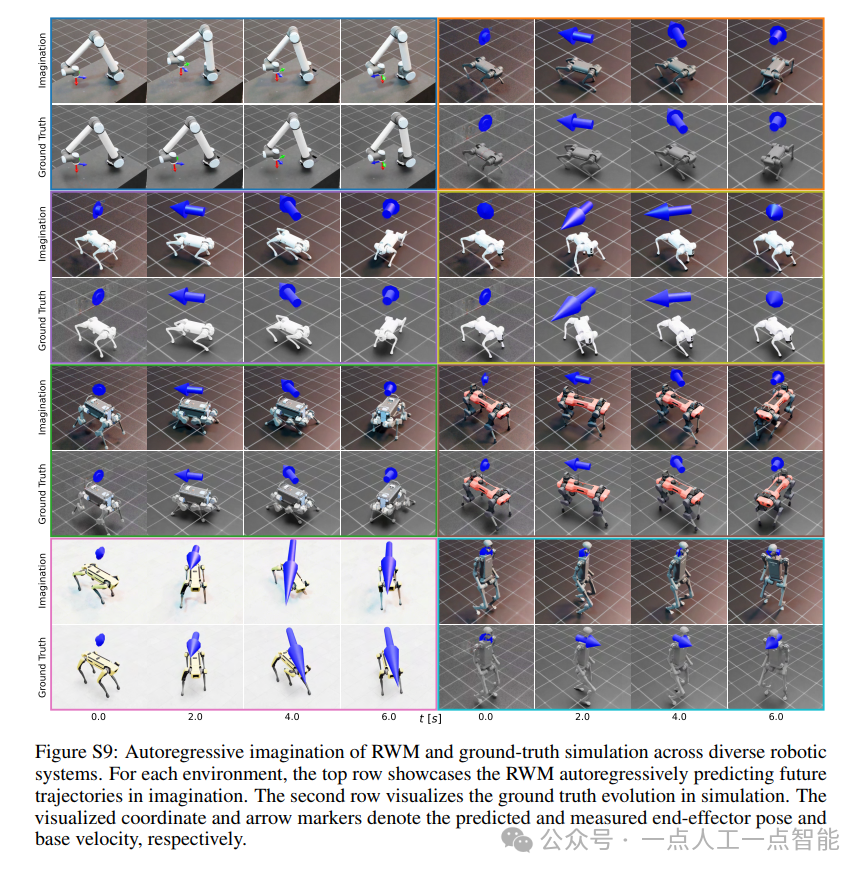BN、SyncBN、IN、LN、GN学习记录
1 BatchNorm

BN的原理
BN是计算机视觉最常用的标准化方法,它沿着N、H、W维度对输入特征图求均值和方差,随后再利用均值和方差来归一化特征图。计算过程如下图所示,1)沿着通道维度计算其他维度的均值;2)沿着通道维度计算其他维度的方差;3)归一化特征图;4)加入可学习参数γ和β(在每次反向传播后更新),对归一化的特征图进行包含缩放和平移的仿射操作,


pytorch中的BN有三种:torch.nn.BatchNorm1d、torch.nn.BatchNorm2d、torch.nn.BatchNorm3d。这里拿torch.nn.BatchNorm2d来举例,它的参数如下,
Args:num_features: 输入特征通道数eps: 为保证数值稳定性(分母不能趋近或取0), 给分母加上的值, 默认值是1e-5momentum: 计算running_mean和running_var时使用的动量(指数平均因子), 默认值是0.1affine: 布尔值, 是否给BN层添加仿射变换的可学习参数γ和β, 默认为Truetrack_running_stats: 布尔值, 是否记录训练中的running mean和variance, 若为False, 则该BN层在训练和验证阶段都只在当前输入中统计mean和variance, 如果此时的batch_size比较小, 那么其统计特性就会和全局统计特性有着较大偏差,可能导致糟糕的效果. 默认值为True更新running_mean和running_var的公式

其中, 为模型更新前的running_mean或running_var,
为模型更新前的running_mean或running_var, 为此次输入的mean或者var。在验证时(model.eval()),running_mean和running_var被视为均值和方差来标准化输入张量。
为此次输入的mean或者var。在验证时(model.eval()),running_mean和running_var被视为均值和方差来标准化输入张量。
BN的优点
BN使得网络中每层输入数据的分布相对稳定(可以使用较大的学习率),不仅极大提升了训练速度,收敛过程大大加快;
BN使得模型对网络中的参数不那么敏感,减弱对初始化的强依赖性,简化调参过程,使得网络学习更加稳定;
BN允许网络使用饱和性激活函数(例如sigmoid等),归一化后的数据,能让梯度维持在比较大的值和变化率,缓解梯度消失或者爆炸;
有轻微的正则化作用(相当于给隐藏层加入噪声,类似Dropout,能缓解过拟合。
BN的缺点
对batchsize的大小比较敏感。如果batchsize太小,则计算的均值、方差不足以代表整个数据分布。小的bathsize引入的随机性更大,难以达到收敛;
不适合于RNN、风格迁移等任务。拿风格迁移举例,由于Mini-Batch内可能存在多张无关的图片,去计算这些图片的均值和方差会弱化单张图片本身特有的一些细节信息。
代码实例
(1)随机初始化输入张量和实例化BN
import torch
import torch.nn as nn# 固定随机种子, 使随机生成的input每次都一样
torch.manual_seed(42)
# 随机生成形状为[1,2,2,2]输入
input = torch.randn((1,2,2,2)).cuda()
print('input:', input)# 实例化BN
bn = nn.BatchNorm2d(num_features=2, eps=0.00001, momentum=0.1, affine=True, track_running_stats=True).cuda()
bn.running_mean = (torch.ones([2])*2).cuda()
bn.running_var = (torch.ones([2])*1).cuda()
bn.train()
# 查看模型更新前的参数
print('trainning:', bn.training)
print('running_mean:', bn.running_mean)
print('running_var:', bn.running_var)
print('weight:', bn.weight) # γ, 初始值为1
print('bias:', bn.bias) # β, 初始值为0# 打印结果
'''
input: tensor([[[[ 0.3367, 0.1288],[ 0.2345, 0.2303]],[[-1.1229, -0.1863],[ 2.2082, -0.6380]]]], device='cuda:0')
trainning: True
running_mean: tensor([2., 2.], device='cuda:0')
running_var: tensor([1., 1.], device='cuda:0')
weight: Parameter containing:
tensor([1., 1.], device='cuda:0', requires_grad=True)
bias: Parameter containing:
tensor([0., 0.], device='cuda:0', requires_grad=True)
'''(2)经过BN层,获取输出结果
# 输出
output = bn(input)
print('output:', output)# 查看模型更新后的参数
print('trainning:', bn.training)
print('running_mean:', bn.running_mean)
print('running_var:', bn.running_var)
print('weight:', bn.weight)
print('bias:', bn.bias)# 打印结果, 由于没有反向传播, 所以γ和β值不变
'''
output: tensor([[[[ 1.4150, -1.4102],[ 0.0257, -0.0305]],[[-0.9276, -0.1964],[ 1.6731, -0.5491]]]], device='cuda:0',grad_fn=<CudnnBatchNormBackward0>)
trainning: True
running_mean: tensor([1.8233, 1.8065], device='cuda:0')
running_var: tensor([0.9007, 1.1187], device='cuda:0')
weight: Parameter containing:
tensor([1., 1.], device='cuda:0', requires_grad=True)
bias: Parameter containing:
tensor([0., 0.], device='cuda:0', requires_grad=True)
'''(3)根据BN的原理,自己写一段归一化代码
# 计算输入数据的均值和方差. 注意, torch.var()函数中unbiased默认为True,表示方差的无偏估计,这里需将它设为False
cur_mean = torch.mean(input, dim=[0,2,3])
cur_var = torch.var(input, dim=[0,2,3], unbiased=False)
print('cur_mean:', cur_mean)
print('cur_var:', cur_var)# 计算running_mean和running_var
new_mean = (torch.ones([2])*2) * (1-bn.momentum) + cur_mean * bn.momentum
new_var = (torch.ones([2])*1) * (1-bn.momentum) + cur_var * bn.momentum
print('new_mean:', new_mean)
print('new_var:', new_var)# 打印结果, 可以看到, 计算出的new_mean和new_var与步骤2的running_mean和running_var一致
'''
cur_mean: tensor([0.2326, 0.0653])
cur_var: tensor([0.0072, 2.1872])
new_mean: tensor([1.8233, 1.8065])
new_var: tensor([0.9007, 1.1187])
'''# 计算输出结果, 训练时用当前数据的mean和方差做标准化, 验证时用running_mean和running_var做标准化
output2 = (input - cur_mean) / torch.sqrt(cur_var + bn.eps)
print('output2:', output2)# 打印结果, 可以看到, 计算出的output2与步骤2的output一致
'''
output2: tensor([[[[ 1.4150, -1.4102],[ 0.0257, -0.0305]],[[-0.9276, -0.1964],[ 1.6731, -0.5491]]]])
'''
2 SyncBatchNorm
BN的效果与batchsize的大小有很大关系。而像目标检测、语义分割这些任务,占用显存较高,每张卡分到的图片数就会变少,而在DP模式下,每张卡只能拿到自己那部分的计算结果。为了在验证或者测试模型时使用相同的running_mean和running_var,DP模式便只拿主卡上计算的均值和方差去更新running_mean和running_var,BN的效果自然就会变差。一个解决思路就是用SyncBN代替BN,使用全局的BN统计量来标准化输入,相比于单卡的BN统计量,全局的BN统计量会更准确。
SyncBatchNorm的原理
本小节的两张图片来自:https://cloud.tencent.com/developer/article/2126838
(1)计算各张卡的均值和方差

(2)同步各卡之间的均值和方差

利用torch.distributed.all_gather函数收集各GPU上的均值和方差,得到全局的均值和方差,更新running_mean和running_var;
(3)标准化输入,该过程与BN类似。
SyncBN源码
import torch
from torch.autograd.function import Functionclass SyncBatchNorm(Function):@staticmethoddef forward(self, input, weight, bias, running_mean, running_var, eps, momentum, process_group, world_size):input = input.contiguous()size = input.numel() // input.size(1)if size == 1:raise ValueError('Expected more than 1 value per channel when training, got input size {}'.format(size))count = torch.Tensor([size]).to(input.device)# calculate mean/invstd for input.mean, invstd = torch.batch_norm_stats(input, eps)count_all = torch.empty(world_size, 1, dtype=count.dtype, device=count.device)mean_all = torch.empty(world_size, mean.size(0), dtype=mean.dtype, device=mean.device)invstd_all = torch.empty(world_size, invstd.size(0), dtype=invstd.dtype, device=invstd.device)count_l = list(count_all.unbind(0))mean_l = list(mean_all.unbind(0))invstd_l = list(invstd_all.unbind(0))# using all_gather instead of all reduce so we can calculate count/mean/var in one gocount_all_reduce = torch.distributed.all_gather(count_l, count, process_group, async_op=True)mean_all_reduce = torch.distributed.all_gather(mean_l, mean, process_group, async_op=True)invstd_all_reduce = torch.distributed.all_gather(invstd_l, invstd, process_group, async_op=True)# wait on the async communication to finishcount_all_reduce.wait()mean_all_reduce.wait()invstd_all_reduce.wait()# calculate global mean & invstdmean, invstd = torch.batch_norm_gather_stats_with_counts(input,mean_all,invstd_all,running_mean,running_var,momentum,eps,count_all.view(-1).long().tolist())self.save_for_backward(input, weight, mean, invstd, count_all)self.process_group = process_group# apply element-wise normalizationout = torch.batch_norm_elemt(input, weight, bias, mean, invstd, eps)return out@staticmethoddef backward(self, grad_output):grad_output = grad_output.contiguous()saved_input, weight, mean, invstd, count_tensor = self.saved_tensorsgrad_input = grad_weight = grad_bias = Noneprocess_group = self.process_group# calculate local stats as well as grad_weight / grad_biassum_dy, sum_dy_xmu, grad_weight, grad_bias = torch.batch_norm_backward_reduce(grad_output,saved_input,mean,invstd,weight,self.needs_input_grad[0],self.needs_input_grad[1],self.needs_input_grad[2])if self.needs_input_grad[0]:# synchronizing stats used to calculate input gradient.# TODO: move div_ into batch_norm_backward_elemt kernelsum_dy_all_reduce = torch.distributed.all_reduce(sum_dy, torch.distributed.ReduceOp.SUM, process_group, async_op=True)sum_dy_xmu_all_reduce = torch.distributed.all_reduce(sum_dy_xmu, torch.distributed.ReduceOp.SUM, process_group, async_op=True)# wait on the async communication to finishsum_dy_all_reduce.wait()sum_dy_xmu_all_reduce.wait()divisor = count_tensor.sum()mean_dy = sum_dy / divisormean_dy_xmu = sum_dy_xmu / divisor# backward pass for gradient calculationgrad_input = torch.batch_norm_backward_elemt(grad_output,saved_input,mean,invstd,weight,mean_dy,mean_dy_xmu)# synchronizing of grad_weight / grad_bias is not needed as distributed# training would handle all reduce.if weight is None or not self.needs_input_grad[1]:grad_weight = Noneif weight is None or not self.needs_input_grad[2]:grad_bias = Nonereturn grad_input, grad_weight, grad_bias, None, None, None, None, None, NoneSyncBN的使用
注意,SyncBN需要在DDP环境初始化后初始化,但是要在DDP模型之前完成初始化。
import torch
from torch import distributeddistributed.init_process_group(backend='nccl')
model = torch.nn.SyncBatchNorm.convert_sync_batchnorm(model)
model = torch.nn.parallel.DistributedDataParallel(model)@classmethod
def convert_sync_batchnorm(cls, module, process_group=None):module_output = moduleif isinstance(module, torch.nn.modules.batchnorm._BatchNorm):module_output = torch.nn.SyncBatchNorm(module.num_features,module.eps,module.momentum,module.affine,module.track_running_stats,process_group,)if module.affine:with torch.no_grad():module_output.weight = module.weightmodule_output.bias = module.biasmodule_output.running_mean = module.running_meanmodule_output.running_var = module.running_varmodule_output.num_batches_tracked = module.num_batches_trackedif hasattr(module, "qconfig"):module_output.qconfig = module.qconfigfor name, child in module.named_children():module_output.add_module(name, cls.convert_sync_batchnorm(child, process_group))del modulereturn module_output3 InstanceNorm

IN的原理
BN注重对batchsize数据归一化,但是在图像风格化任务中,生成的风格结果主要依赖于某个图像实例,所以对整个batchsize数据进行归一化不合适,因此提出了IN,只对HW维度进行归一化,IN保留了N、C的维度。计算过程如下图所示,1)沿着H、W维度,对输入张量求均值和方差;2)利用求得的均值和方差来标准化输入张量;3)加入可学习参数γ和β,对标准化后的数据做仿射变换,

IN的使用
torch.nn.InstanceNorm2d(num_features, eps=1e-05, momentum=0.1, affine=True, track_running_stats=True)class InstanceNorm2d(_InstanceNorm):def _get_no_batch_dim(self):return 3def _check_input_dim(self, input):if input.dim() not in (3, 4):raise ValueError('expected 3D or 4D input (got {}D input)'.format(input.dim()))class _InstanceNorm(_NormBase):def __init__(self,num_features: int,eps: float = 1e-5,momentum: float = 0.1,affine: bool = False,track_running_stats: bool = False,device=None,dtype=None) -> None:factory_kwargs = {'device': device, 'dtype': dtype}super(_InstanceNorm, self).__init__(num_features, eps, momentum, affine, track_running_stats, **factory_kwargs)def _check_input_dim(self, input):raise NotImplementedErrordef _get_no_batch_dim(self):raise NotImplementedErrordef _handle_no_batch_input(self, input):return self._apply_instance_norm(input.unsqueeze(0)).squeeze(0)def _apply_instance_norm(self, input):return F.instance_norm(input, self.running_mean, self.running_var, self.weight, self.bias,self.training or not self.track_running_stats, self.momentum, self.eps)def _load_from_state_dict(self, state_dict, prefix, local_metadata, strict,missing_keys, unexpected_keys, error_msgs):version = local_metadata.get('version', None)# at version 1: removed running_mean and running_var when# track_running_stats=False (default)if version is None and not self.track_running_stats:running_stats_keys = []for name in ('running_mean', 'running_var'):key = prefix + nameif key in state_dict:running_stats_keys.append(key)if len(running_stats_keys) > 0:error_msgs.append('Unexpected running stats buffer(s) {names} for {klass} ''with track_running_stats=False. If state_dict is a ''checkpoint saved before 0.4.0, this may be expected ''because {klass} does not track running stats by default ''since 0.4.0. Please remove these keys from state_dict. If ''the running stats are actually needed, instead set ''track_running_stats=True in {klass} to enable them. See ''the documentation of {klass} for details.'.format(names=" and ".join('"{}"'.format(k) for k in running_stats_keys),klass=self.__class__.__name__))for key in running_stats_keys:state_dict.pop(key)super(_InstanceNorm, self)._load_from_state_dict(state_dict, prefix, local_metadata, strict,missing_keys, unexpected_keys, error_msgs)def forward(self, input: Tensor) -> Tensor:self._check_input_dim(input)if input.dim() == self._get_no_batch_dim():return self._handle_no_batch_input(input)return self._apply_instance_norm(input)IN的优点
IN适合于生成式对抗网络的相关任务,如风格迁移。图片生成的结果主要依赖于某个图像实例,对整个batchsize进行BN操作不适合风格迁移任务,在该任务中使用IN不仅可以加速模型收敛,并且可以保持每个图像实例之间的独立性,不受通道和batchsize的影响。
IN的缺点
如果要利用到特征图通道之间的相关性,不建议使用IN做归一化处理。
4 LayerNorm

LN的原理
在NLP任务中,比如文本任务,不同样本的长度往往不一样,使用BN来标准化则不太合理。因此提出了LN,对CHW维度进行归一化。计算过程如下图所示,1)沿着C、H、W维度求输入张量的均值和方差;2)利用所求得的均值和方差标准化输入;3)加入可学习参数γ和β,对标准化后的数据做仿射变换,

LN的使用
torch.nn.LayerNorm(normalized_shape, eps=1e-05, elementwise_affine=True)class LayerNorm(Module):__constants__ = ['normalized_shape', 'eps', 'elementwise_affine']normalized_shape: Tuple[int, ...]eps: floatelementwise_affine: booldef __init__(self, normalized_shape: _shape_t, eps: float = 1e-5, elementwise_affine: bool = True,device=None, dtype=None) -> None:factory_kwargs = {'device': device, 'dtype': dtype}super(LayerNorm, self).__init__()if isinstance(normalized_shape, numbers.Integral):# mypy error: incompatible types in assignmentnormalized_shape = (normalized_shape,) # type: ignore[assignment]self.normalized_shape = tuple(normalized_shape) # type: ignore[arg-type]self.eps = epsself.elementwise_affine = elementwise_affineif self.elementwise_affine:self.weight = Parameter(torch.empty(self.normalized_shape, **factory_kwargs))self.bias = Parameter(torch.empty(self.normalized_shape, **factory_kwargs))else:self.register_parameter('weight', None)self.register_parameter('bias', None)self.reset_parameters()def reset_parameters(self) -> None:if self.elementwise_affine:init.ones_(self.weight)init.zeros_(self.bias)def forward(self, input: Tensor) -> Tensor:return F.layer_norm(input, self.normalized_shape, self.weight, self.bias, self.eps)def extra_repr(self) -> str:return '{normalized_shape}, eps={eps}, ' \'elementwise_affine={elementwise_affine}'.format(**self.__dict__)LN的优点
LN不需要批量训练。在单条数据内部就能完成归一化操作,因此可以用于batchsize=1和RNN的训练中,效果比BN更优。不同的输入样本有不同的均值和方差,可以更快、更好地达到最优效果。LN不需要保存batchsize的均值和方差,节省了额外的存储空间。
LN的缺点
LN与batchsize无关,在小batchsize上效果可能会比BN好,但是在大batchsize的效果还是BN更好。
5 GroupNorm

GN的原理
GN是为了解决BN对较小的batchsize效果差的问题,它将通道分成num_groupss组,每组包含channel/num_groups个通道,则特征图变为(N, G, C//G, H, W),然后计算每组(C//G, H, W)维度的均值和方差,这样就与batchsize无关。GN的极端情况就是LN和IN,分别对应G等于1和G等于C。GN的计算过程如下图所示,1)沿着C//G、H、W维度计算输入张量的均值和方差;2)利用所求得的均值和方差标准化输入;3)加入可学习参数γ和β,对标准化后的数据做仿射变换,

GN的使用
torch.nn.GroupNorm(num_groups, num_channels, eps=1e-05, affine=True, device=None, dtype=None)class GroupNorm(Module):__constants__ = ['num_groups', 'num_channels', 'eps', 'affine']num_groups: intnum_channels: inteps: floataffine: booldef __init__(self, num_groups: int, num_channels: int, eps: float = 1e-5, affine: bool = True,device=None, dtype=None) -> None:factory_kwargs = {'device': device, 'dtype': dtype}super(GroupNorm, self).__init__()if num_channels % num_groups != 0:raise ValueError('num_channels must be divisible by num_groups')self.num_groups = num_groupsself.num_channels = num_channelsself.eps = epsself.affine = affineif self.affine:self.weight = Parameter(torch.empty(num_channels, **factory_kwargs))self.bias = Parameter(torch.empty(num_channels, **factory_kwargs))else:self.register_parameter('weight', None)self.register_parameter('bias', None)self.reset_parameters()def reset_parameters(self) -> None:if self.affine:init.ones_(self.weight)init.zeros_(self.bias)def forward(self, input: Tensor) -> Tensor:return F.group_norm(input, self.num_groups, self.weight, self.bias, self.eps)def extra_repr(self) -> str:return '{num_groups}, {num_channels}, eps={eps}, ' \'affine={affine}'.format(**self.__dict__)GN的优点
GN不依赖于batchsize,可以很好适用于RNN,这是GN的巨大优势。论文指出G为32或每个group的通道数为16时,效果最优;在batchsize小于16时,GN优于BN。


GN的缺点
在大batchsize时,效果不如BN。
6 总结
BN对小batchsize的效果不好;
IN作用在图像像素上,适用于风格化迁移;
LN主要对RNN作用明显;
GN将channel分组,然后再做归一化, 在batchsize<16的时候, 效果优于BN。
参考文章
【博客园】https://www.cnblogs.com/lxp-never/p/11566064.html
【知乎】https://zhuanlan.zhihu.com/p/395855181
【腾讯云】https://cloud.tencent.com/developer/article/2126838
相关文章:

BN、SyncBN、IN、LN、GN学习记录
1 BatchNormBN的原理BN是计算机视觉最常用的标准化方法,它沿着N、H、W维度对输入特征图求均值和方差,随后再利用均值和方差来归一化特征图。计算过程如下图所示,1)沿着通道维度计算其他维度的均值;2)沿着通…...

使用 Auto-scheduling 优化算子
本篇回答来源于 TVM 官方英文文档 Lianmin Zheng,Chengfan Jia。更多 TVM 中文文档可访问→https://tvm.hyper.ai/ 本教程将展示 TVM 的 Auto Scheduling 功能,如何在不编写自定义模板的情况下,找到最佳 schedule。 与基于模板的 AutoTVM 依…...

智能运维应用之道,告别企业数字化转型危机
面临的问题及挑战 数据中心发展历程 2000 年中国数据中心始建,至今已经历以下 3 大阶段。早期:离散型数据中心 IT 因以项目建设为导向,故缺乏规划且无专门运维管理体系,此外,开发建设完的项目均是独立运维维护&#…...

第七章 SQL错误信息 - SQL错误代码 -400 到 -500
文章目录第七章 SQL错误信息 - SQL错误代码 -400 到 -500SQL错误代码和消息表WinSock错误代码-10050到-11002第七章 SQL错误信息 - SQL错误代码 -400 到 -500 SQL错误代码和消息表 错误代码描述-400发生严重错误-401严重连接错误-402用户名/密码无效-405无法从通信设备读取-4…...

DDFN: Decoupled Dynamic Filter Networks解耦的动态卷积
一、论文信息 论文名称:Decoupled Dynamic Filter Networks 论文:https://thefoxofsky.github.io/files/ddf.pdf 代码:https://github.com/theFoxofSky/ddfnet 主页:https://thefoxofsky.github.io/project_pages/ddf 作者团…...

NISP认证报名条件是什么?考试内容是什么?
科学技术是社会发展的第一生产力,每个国家为了能够获得更高的国际地位,不断提升自己的科学技术,现代最为先进的技术就是信息通信,在军事、民生、医疗、教育、制造等等领域都起着重要的作用,我们的生活也因为信息技术而…...

利用redis实现缓存、发布订阅、分布式锁功能
Redis是一个内存键值存储数据库,通常用于缓存、会话管理、消息队列等场景。以下是一些常见的Redis使用场景:1.缓存:将常用的数据缓存在Redis中,以减少对数据库的访问次数,提高应用程序的性能。2.会话管理:使…...

SVN无法连接到服务器的各种问题原因及解决办法
SVN专业使用教程详解 第一节 安装VisualSVN Server服务器 第一步 下载SVN服务器,需要链接的请私信。 点击下载的执行文档进行安装 选择组件 选择在部署 VisualSVN Server 时安装VisualSVN Server 和 Administration Tools 组件。 调整初始服务器配置 或者&…...

React 基本使用
目录 React 安装 React基本使用 React脚手架 脚手架使用React JSX基本使用 JSX列表渲染 JSX条件渲染 JSX模板精简 JSX样式控制 JSX综合案例 React 安装 npm i react react-domnpm init -y(生成基础目录文件) <!-- 引入js文件 --><sc…...

单例模式设计(面试题)
1、static修饰变量规则static修饰的静态成员属于 类而不是对象,所有的对象共享一份静态成员数据,所以不占用类的空间static修饰的成员,定义类的时候,必须分配空间static修饰的静态成员数据 必须类中定义 类外初始化静态成员变量可…...

机器学习:基于支持向量机(SVM)进行人脸识别预测
机器学习:基于支持向量机(SVM)进行人脸识别预测 文章目录机器学习:基于支持向量机(SVM)进行人脸识别预测一、实验目的二、实验原理三、实验环境四、实验内容五、实验步骤1.准备数据2.业务理解3.数据理解4.数…...

【服务器数据恢复】多块磁盘离线导致RAIDZ崩溃的数据恢复案例
服务器数据恢复环境: SUN ZFS系列某型号存储阵列; 40块磁盘组建的存储池(其中4块磁盘用作全局热备盘),池内划分出若干空间映射到服务器使用; 服务器使用Windows操作系统。 服务器故障: 服务器在…...

iconfont 图标如何在uniapp中的tabBar使用
注意: 小程序并不支持tabBar中 设置 iconfont 1. 材料准备 首先进入字体图标网址:iconfont-阿里巴巴矢量图标库;(如果你没有登入,记得登入一下) 把图标添加入购物车 添加到购物车之后-(右上角…...

第六章.卷积神经网络(CNN)—卷积层(Convolution)池化层(Pooling)
第六章.卷积神经网络(CNN) 6.1 卷积层(Convolution)&池化层(Pooling) 1.整体结构 以5层神经网络的实现为例: 1).基于全连接层(Affine)的网络 全连接层:相邻层的所有神经元之间都有连接 2).常见的CNN的网络 3).全连接层存在的问题 数据的形状容易被…...

c/c++开发,无可避免的模板编程实践(篇六)
一、泛型算法 1.1 泛型算法概述 c标准库不仅包含数据结构(容器、容器适配器等),还有很多算法。数据结构可以帮助存放特定情况下需要保存的数据,而算法则会将数据结构中存储的数据进行变换。标准库没有给容器添加大量的功能函数&am…...

【Java】Spring核心与设计思想
文章目录Spring核心与设计思想1. Spring是什么1.1 什么是容器1.2 什么是IOC1.2.1 传统程序开发1.2.2 控制反转式程序开发1.2.3 对比总结规律1.3 理解Spring IOC1.4 DI概念说明Spring核心与设计思想 1. Spring是什么 我们通常所说的Spring指的是Spring Framework(S…...

组合实现多类别分割(含实战代码)
来源:投稿 作者:AI浩 编辑:学姐 摘要 segmentation_models_pytorch是一款非常优秀的图像分割库,albumentations是一款非常优秀的图像增强库,这篇文章将这两款优秀结合起来实现多类别的图像分割算法。数据集选用CamVid…...

从红队视角看AWD攻击
AWD的权限维持 攻防兼备AWD模式是一种综合考核参赛团队攻击、防御技术能力、即时策略的比赛模式。在攻防模式中,参赛队伍分别防守同样配置的虚拟靶机,并在有限的博弈时间内,找到其他战队的薄弱环节进行攻击,同时要对自己的靶机环…...

龙腾万里,福至万家——“北京龙文化促进协会第九届龙抬头传承会”在京举办
2023年2月21日(农历2月初二)上午9:00点至下午13:00,由北京龙文化促进协会主办、传世经典(北京)文化发展有限公司承办、北京华夏龙文旅联盟协办的“北京龙文化促进协会第九届二月二龙抬头传承会”在北京市丰台区顺和国际大厦A口6层会议厅隆重召开。 传承会活动内容主…...
)
《软件方法》强化自测题-业务建模(4)
按照业务建模、需求、分析、设计工作流考察,答案不直接给出,可访问自测链接或扫二维码自测,做到全对才能知道答案。 知识点见《软件方法》(http://www.umlchina.com/book/softmeth.html)、 “软件需求设计方法学全程…...

未来机器人的大脑:如何用神经网络模拟器实现更智能的决策?
编辑:陈萍萍的公主一点人工一点智能 未来机器人的大脑:如何用神经网络模拟器实现更智能的决策?RWM通过双自回归机制有效解决了复合误差、部分可观测性和随机动力学等关键挑战,在不依赖领域特定归纳偏见的条件下实现了卓越的预测准…...

docker详细操作--未完待续
docker介绍 docker官网: Docker:加速容器应用程序开发 harbor官网:Harbor - Harbor 中文 使用docker加速器: Docker镜像极速下载服务 - 毫秒镜像 是什么 Docker 是一种开源的容器化平台,用于将应用程序及其依赖项(如库、运行时环…...

Linux-07 ubuntu 的 chrome 启动不了
文章目录 问题原因解决步骤一、卸载旧版chrome二、重新安装chorme三、启动不了,报错如下四、启动不了,解决如下 总结 问题原因 在应用中可以看到chrome,但是打不开(说明:原来的ubuntu系统出问题了,这个是备用的硬盘&a…...

AI,如何重构理解、匹配与决策?
AI 时代,我们如何理解消费? 作者|王彬 封面|Unplash 人们通过信息理解世界。 曾几何时,PC 与移动互联网重塑了人们的购物路径:信息变得唾手可得,商品决策变得高度依赖内容。 但 AI 时代的来…...

Kafka入门-生产者
生产者 生产者发送流程: 延迟时间为0ms时,也就意味着每当有数据就会直接发送 异步发送API 异步发送和同步发送的不同在于:异步发送不需要等待结果,同步发送必须等待结果才能进行下一步发送。 普通异步发送 首先导入所需的k…...

探索Selenium:自动化测试的神奇钥匙
目录 一、Selenium 是什么1.1 定义与概念1.2 发展历程1.3 功能概述 二、Selenium 工作原理剖析2.1 架构组成2.2 工作流程2.3 通信机制 三、Selenium 的优势3.1 跨浏览器与平台支持3.2 丰富的语言支持3.3 强大的社区支持 四、Selenium 的应用场景4.1 Web 应用自动化测试4.2 数据…...

TSN交换机正在重构工业网络,PROFINET和EtherCAT会被取代吗?
在工业自动化持续演进的今天,通信网络的角色正变得愈发关键。 2025年6月6日,为期三天的华南国际工业博览会在深圳国际会展中心(宝安)圆满落幕。作为国内工业通信领域的技术型企业,光路科技(Fiberroad&…...

在 Spring Boot 项目里,MYSQL中json类型字段使用
前言: 因为程序特殊需求导致,需要mysql数据库存储json类型数据,因此记录一下使用流程 1.java实体中新增字段 private List<User> users 2.增加mybatis-plus注解 TableField(typeHandler FastjsonTypeHandler.class) private Lis…...

MySQL 主从同步异常处理
阅读原文:https://www.xiaozaoshu.top/articles/mysql-m-s-update-pk MySQL 做双主,遇到的这个错误: Could not execute Update_rows event on table ... Error_code: 1032是 MySQL 主从复制时的经典错误之一,通常表示ÿ…...

Spring Boot + MyBatis 集成支付宝支付流程
Spring Boot MyBatis 集成支付宝支付流程 核心流程 商户系统生成订单调用支付宝创建预支付订单用户跳转支付宝完成支付支付宝异步通知支付结果商户处理支付结果更新订单状态支付宝同步跳转回商户页面 代码实现示例(电脑网站支付) 1. 添加依赖 <!…...
